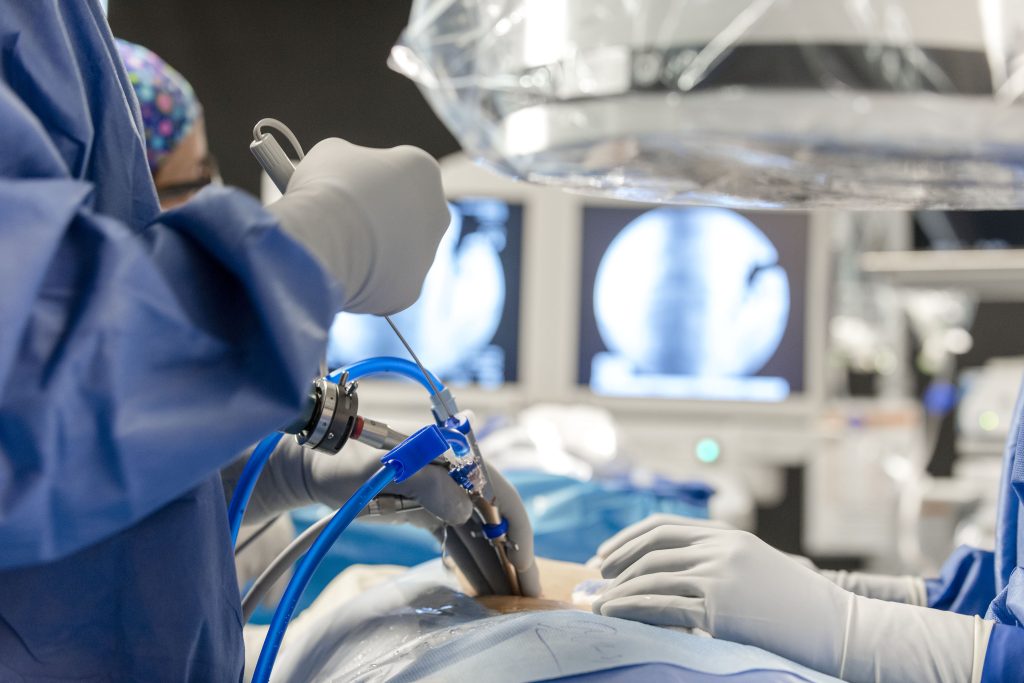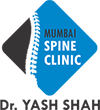Introduction
When faced with spinal issues, patients often wonder: Should I choose endoscopic spine surgery or traditional open surgery?
Both techniques are designed to relieve pain and improve mobility, but they differ significantly in terms of procedure, recovery, risks, and suitability. Understanding these differences can help you make an informed decision about which approach is best for your condition.
Endoscopic spine surgery (ESS) is a minimally invasive procedure that allows surgeons to treat spinal conditions with minimal disruption to surrounding tissues. Traditional open spine surgery, on the other hand, involves larger incisions and more extensive tissue dissection but may be necessary for more complex spinal problems.
This article provides a detailed comparison of both surgical options to help you choose the best approach for your spine health.
Key Differences Between Endoscopic Spine Surgery and Open Surgery
| Feature | Endoscopic Spine Surgery (ESS) | Traditional Open Surgery |
|---|---|---|
| Incision Size | Small (<1 cm) | Large (5-7 cm) |
| Tissue Damage | Minimal | Significant |
| Pain Levels | Lower | Higher |
| Recovery Time | 2-6 weeks | 3-6 months |
| Hospital Stay | Same-day discharge | 3-5 days |
| Risk of Infection | Low | Higher |
How Endoscopic Spine Surgery Works

Endoscopic spine surgery is performed using a small incision (less than 1 cm) through which a thin, flexible tube called an endoscope is inserted. The endoscope is equipped with a small camera and light, allowing the surgeon to visualize the affected area with high precision on a monitor. Specialized instruments are then used to remove herniated disc material, decompress nerves, or address spinal conditions with minimal damage to surrounding muscles and tissues.
Advantages of Endoscopic Spine Surgery
- Minimally Invasive: Small incisions mean less scarring and quicker healing.
- Faster Recovery: Most patients can return to normal activities within weeks rather than months.
- Less Pain: Since there is minimal muscle disruption, post-surgical pain is significantly reduced.
- Lower Risk of Complications: Smaller incisions decrease the risk of infection and blood loss.
- Outpatient Procedure: Many patients can return home the same day.
When Is Traditional Open Surgery Necessary?

Despite the advantages of endoscopic spine surgery, not all spinal conditions can be treated with minimally invasive techniques. Traditional open surgery may be the best option for patients with:
- Severe Spinal Instability: Conditions requiring spinal fusion to stabilize the spine.
- Multiple Spinal Levels Affected: When spinal degeneration is widespread and requires more extensive correction.
- Complex Conditions: Conditions like scoliosis, severe fractures, or tumors often require open surgery with metal implants or bone grafting.
Challenges of Open Spine Surgery
- Longer Recovery Time: Healing can take several months due to larger incisions and more muscle damage.
- More Pain: Muscle dissection leads to increased post-operative pain.
- Higher Risk of Complications: Includes a greater chance of infection, blood clots, and prolonged hospital stays.
Which One Is Right for You?
The choice between endoscopic spine surgery and traditional open surgery depends on several factors, including the severity of your condition, medical history, and treatment goals.
Choose Endoscopic Spine Surgery If:
✅ You have a herniated disc, spinal stenosis, or mild degenerative disease.
✅ You want a quicker recovery with less pain.
✅ You prefer an outpatient procedure with minimal disruption to daily life.
Choose Traditional Open Surgery If:
✅ You have severe spinal instability requiring fusion.
✅ Your condition requires hardware placement for added support.
✅ You have multiple spinal levels affected, needing extensive surgical correction.
Conclusion
Both endoscopic spine surgery and traditional open surgery have their advantages and are suitable for different conditions. Endoscopic spine surgery offers a safer, faster, and less painful alternative for many patients, but traditional open surgery remains necessary for more severe or complex spinal issues.
If you are experiencing chronic back pain and are unsure which surgical approach is right for you, consulting with Dr. Yash Shah, a top spine surgeon in Mumbai at Mumbai Spine Clinic, can help determine the most effective treatment for your unique condition. His expertise in advanced spinal procedures ensures that you receive the best possible care tailored to your needs.
Book a consultation today to explore your options for a pain-free life!

